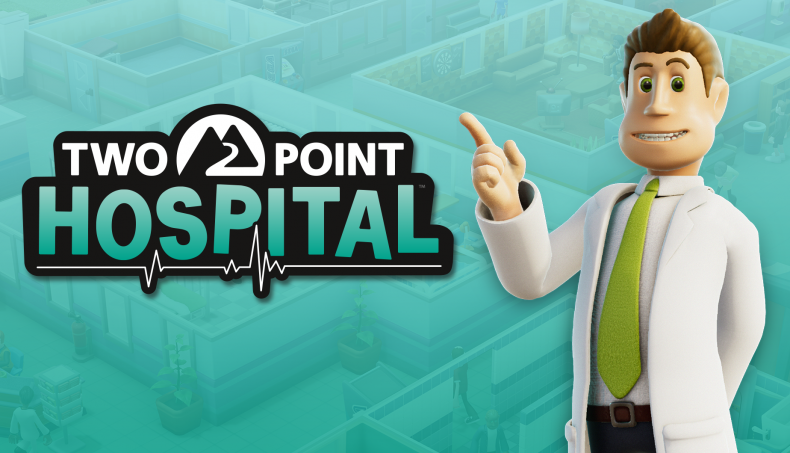With Two Point Hospital finally landing on consoles and being damn good to boot, many of you will be taking the plunge. The game has many things you need to consider, and it can feel a bit overwhelming to newcomers. But don’t worry, here at GodisaGeek, we’ve got you covered with some top tips to get started with Two Point Hospital.
1. Make use of Time
One of the simplest, but biggest pieces of support you get in Two Point Hospital is the manipulation of time. It isn’t there just to look fancy but can make a real difference to your success. With a simple press of the right analogue stick, you can switch between normal time, slow-mo or fast-forward. It’s likely that, for large portions of the game, you’ll knock it up to fast-forward and be able to cope.
However, the left analogue stick will be your best friend, because a click of that will pause time completely. This gives you the breathing space to assess any damage or problems and gives you as much time as you need to sort them out. So if you spot a problem that needs fixing, it’s almost always recommended to pause time to sort it out. There’s no penalty to doing so, and it takes the pressure off you, meaning you won’t rush and make a mistake.
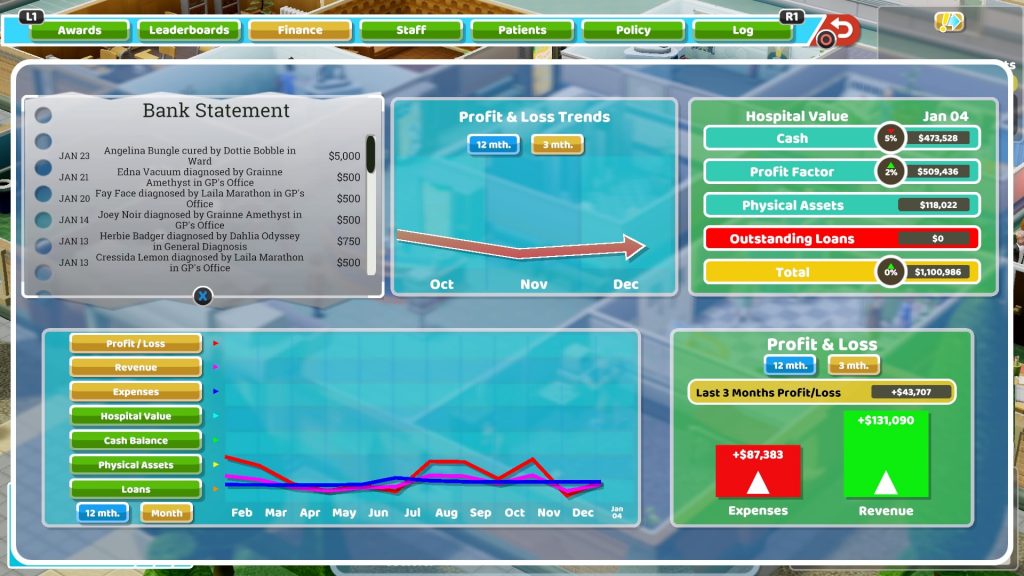
2. It’s all about the Money
It may sound obvious, but you’ll definitely need to keep an eye on your bank balance. Yes, the noble pursuit of public health is important, but you’re also running a business here. And besides, profits mean expansion which allows you to help more patients. So maybe focus on that if you’re having trouble sleeping at night as you eke out all the money you can from your sick customers. Building rooms, paying staff; it all costs money and things can often feel tight at the beginning of a new hospital. Your starting balance can feel paltry compared to the grand plans you have.
Be sure to have a look at your financial overview once in a while. It’s packed with loads of useful information and can help you spot where you may be overspending. But in spite of all that, don’t be afraid to take out a loan in the short term. I’d recommend starting with the smallest amount, with the lowest interest. With a well-run hospital, you’ll be turning a profit and will soon make back the expenditure, especially if you’re following this guide!
3. Some advice on rooms
How you set up your rooms can make a fair amount of difference to your success or failure. There are some basic principles you can follow to make your rooms more effective. Firstly, every room should have its necessary items, as well as at least a plant and a bin. The plant will make people happy and a bin will reduce litter for your Janitors to sweep up. Additionally, if there is machinery in the room, pop down a fire extinguisher just in case. Also, if you can, try to keep the patient walk distance to a minimum. This means placing the bits and bobs a patient uses, such as their chair in a GP’s office or their couch in a Psychiatry room, as close to the door as possible.
It doesn’t sound like much but if patients can get in and out quickly it will make a big difference to your queues in the long run. If budget and space allows in your hospital don’t automatically go for the minimum room size either, as larger rooms improve performance and staff motivation. Include a few additional pictures or furnishings and see your room rating increase. Stop when your room rating increases to the level you want though (a message should pop up when it does) so you spend only what you need to.
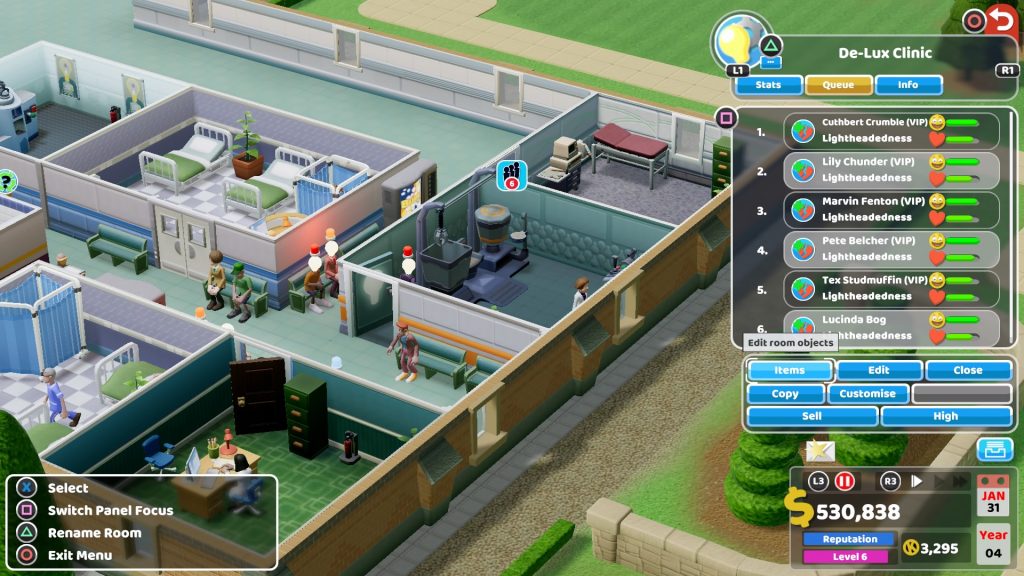
4. Keep an eye on queues
That most British of pursuits, queuing, is not just something to accept in Two Point Hospital, but it’s often a measure of your hospital’s performance. Short queues mean patients have what they need and can move through diagnosis and treatment quickly. They’ll be happy and, more importantly, be providing income relatively quickly as they are treated fast. Longer queues show something is going wrong. It could either be an ad hoc problem, such as a key member of staff needs a break and there is no one to replace them. Alternatively, it could be a signal that staff are inefficient or that you simply need an additional room of that type – something that is common with GP’s Offices for example – as your hospital expands.
You can change the level at which queues are flagged to you in the settings, but the default of six is a fairly decent yardstick. Always immediately remedy problems relating to long queues, as shorter queues always benefit you. Don’t forget that you can also reorder patients in a queue by clicking on them and altering their queue number, with “1” being the next in line. It’s particularly handy when you have an emergency inbound and want to prioritise those patients above others.
5. A hospital within a hospital
As you expand and need to create additional versions of rooms to cope with your ever-expanding patient population, some upfront considerations can make all the difference. Rather than just adding rooms willy-nilly due to queue lengths, remember to replicate the working hospitals you first created. It’s worth creating separate areas with a Reception Desk, GP’s Office, Diagnosis Rooms (including Psychiatry and Ward) and maybe a Pharmacy too, so that patients can still have an efficient experience. There’s nothing worse than patients spending all their time wandering the length of your hospital on their diagnosis journey. So place useful rooms near each other, like mini hospitals and you’ll see a marked improvement in the number of patients you get through.
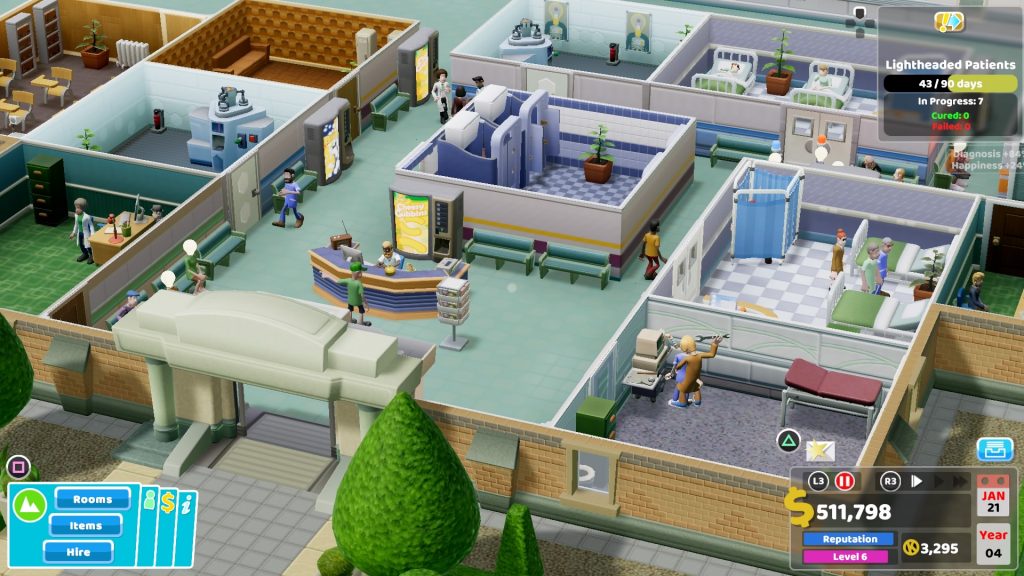
6. Make waiting enjoyable
With so much emphasis on your rooms and their efficiency, it can be easy to overlook the importance of the corridors and waiting areas. They need to be considered as much as your rooms are. You’ll want to make sure there’s plenty of seating so that no one has to stand whilst they’re waiting. Place them outside rooms, or in little sections back to back in open areas. You’ll also need to feed and water your patients and keep them entertained too, so don’t forget vending machines and activities.
A useful, but often overlooked feature, is the use of overviews in your hospital. There are plenty of filters you can apply to see levels of cleanliness, heating and other factors, to make sure all areas of your hospital are up to scratch. Whenever you go to buy an item, you can see in its descriptions which factors they help improve. So drop a few of the right items in neglected areas of your hospital and that’ll improve your patient happiness.
7. Upgrade and train when you can
To give yourself the best chance of success you’ll want the best staff and best machinery. That way, more patients will be cured quicker, which is what you want. Training staff in key skills is paramount for this, to ensure your patients get the best care. Certain skills like Diagnostics and Motivation are good for most Doctors and Nurses. Also if you have staff trained in Pharmacy or Ward skills, try and place them in those rooms for maximum return. Specific skills like Research or Psychiatry need to managed to make sure you have enough trained staff for the number of rooms of those types you have, allowing for staff breaks.
Also, always upgrade machinery when you can afford to, as this will result in higher efficiency and hopefully fewer patient deaths. Often your advisor will point out machines you can still upgrade from time to time if you find yourself losing track. It’s worth occasionally pausing the game and reviewing all your machinery to see if any need upgrading. Remember training and upgrading machinery detracts your staff from performing their other duties, so make you have suitable cover otherwise your hospital will come to a standstill.
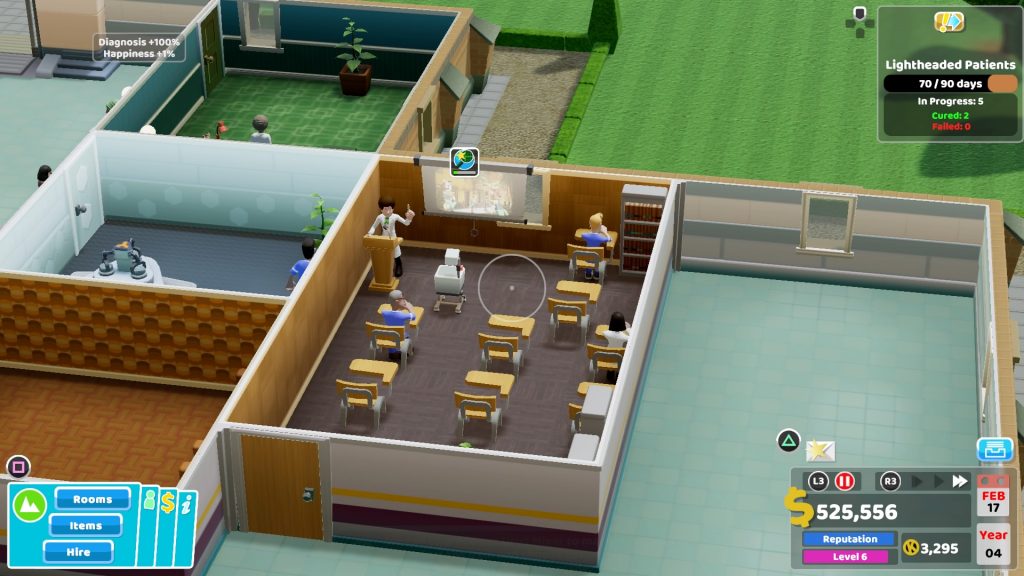
8. Check how people are feeling
Icons above a patient’s head – or indeed those of your own staff – can tell you a lot about how they’re feeling. Sometimes their mood will get so bad that people will leave your hospital in frustration. If you see this or an unhappy icon above someone’s head, pause the game and investigate. Simply hovering over them or clicking on them will give you some information on why they feel the way they do. Then figure out the simplest way to sort it out. If someone is thirsty or hungry, then consider more vending areas in the vicinity. If people are cold or bored, pop some radiators or newsstands down to alleviate their issue. Chances are this one individual isn’t alone so often helping out one person will benefit the many.


